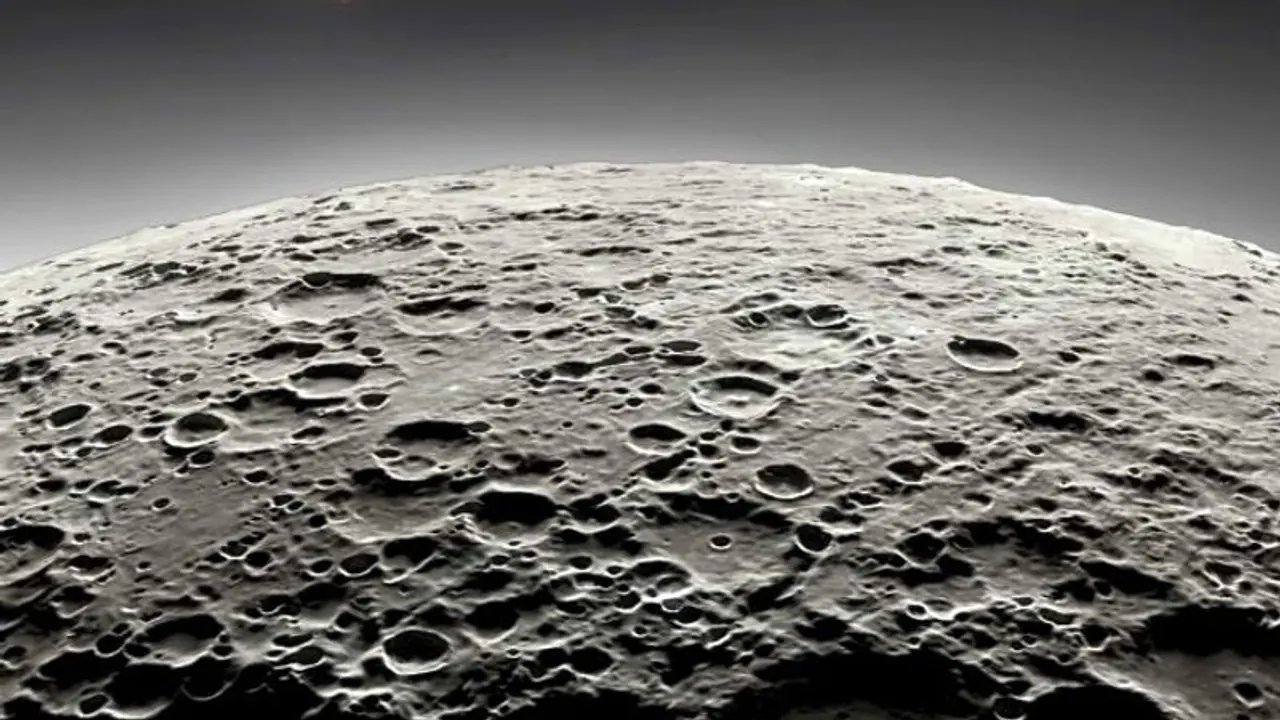On August 18, Lander Vikram of Chandrayaan-3, carrying Rover Pragyan, underwent its first crucial ‘deboosting’ manoeuvre after being successfully separated from the propulsion module the previous day, which marked a significant advancement in their mission towards a gentle landing at the Moon’s south pole. Girish Linganna reports
On Friday, August 18, 2023, the Indian Space Research Organisation (ISRO) stated that Lander Vikram of Chandrayaan-3, carrying Rover Pragyan, underwent its first crucial ‘deboosting’ manoeuvre (the process of slowing down) at about 16:00 (IST) after being successfully separated from the propulsion module the previous day (August 17). The second ‘deboosting’ operation is scheduled for 02:00 (IST) on Sunday (August 20, 2023).

With this latest manoeuvre, the Lander Module -- comprising Vikram and Pragyan -- has now successfully lowered its orbit to 113 km x 157 km. Its next manoeuvre will be to position itself in an orbit with a Perilune of 30 kilometres and an Apolune of 100 kilometres -- its closest orbit of the Moon. This is the location from which an attempt will be made on August 23 at a soft descent in the Moon’s south polar region. The propulsion module will remain in its current orbit for months or years while accumulating scientific data. It will continue its journey and observe Earth from the Moon’s orbit.
It carries a tool called Spectro-polarimetry of Habitable Planetary Earth (SHaPE), which helps scientists find smaller planets near other stars that may qualify for signs of life.
Chandrayaan-3 Mission
The main goals of the Chandrayaan-3 mission are to showcase a secure and soft landing, have a rover moving on the Moon’s surface and conduct in situ, or on-site, scientific tests. Both the lander and the rover are equipped with scientific instruments to perform these experiments on the lunar surface.
ISRO Chief S Somanath conveyed his assurance on the chances of the mission’s success, highlighting that the key challenge during landing would be to reduce the lander’s speed as it descends from 30 kilometres to the landing spot. He emphasized that smoothly changing the spacecraft’s orientation from horizontal to vertical would be the pivotal manoeuvre.
Why the South Pole?
Despite its difficult terrain, the south-polar region of the Moon is a highly prized target for scientists due to the possibility of the presence of substantial quantities of ice. This could be utilized to obtain fuel, oxygen, and even potable water.
The cost of ISRO’s Mission
The authorised budget for Chandrayaan-3 is Rs 250 crores (excluding the cost of the launch vehicle). As reported, the launch service expenses are approximately Rs 365 crore.
Plight of Chandrayaan-2
On September 7, 2019, during the Chandrayaan-2 mission, there was a setback in the landing attempt. The Vikram lander deviated from its intended path, resulting in a communication breakdown with the Pragyan rover on board. However, despite this unforeseen situation, the Chandrayaan-2 orbiter remains fully operational. It continues to orbit the Moon, gathering significant scientific information.
Key Differences Between Chandrayaan-2 and Chandrayaan-3
* Unlike Chandrayaan-2, Chandrayaan-3 does not include an orbiter in its payload
* The orbiter of Chandrayaan-2 is still functioning, offering valuable information
* Chandrayaan-3 is launched with greater power launch capability of LVM3 (formerly known as GSLV Mk-III)
* Enhanced fuel capacity permits additional manoeuvres and extended travel
* Strengthened landing legs guarantee a safer and steadier landing on the lunar surface
* Chandrayaan-3 features enhanced sensors and larger solar panels
* Augmented solar panel dimensions result in higher energy production for onboard systems
* Inclusion of a ‘Laser Doppler Velocimeter’ enables precise measurement of spacecraft velocity
* Algorithm and software have been refined to reduce the impact of software issues
* Landing area has been enlarged from 500 x 500m to 4 x 2.4km to enhance flexibility
National Emblem on Moon
The back wheels of rover Pragyan will create impressions of both ISRO’s identity and the National Emblem, which portrays the Lion Capital of Ashoka at Sarnath, on the lunar terrain. This will signify its presence and leaves a distinctive Indian imprint.
Chandrayaan-3 Mission Timeline
* July 6: ISRO declares July 14 date of Chandrayaan-3 launch from Sriharikota’s 2nd launch pad
* July 7: Successful tests for vehicle electronics concluded
* July 11: Comprehensive 24-hour launch rehearsal simulating the entire launch process completed
* July 14: LVM3 M4 vehicle propels Chandrayaan-3 into intended orbit
* July 15: First successful orbit-raising manoeuvre elevates orbit to 41,762 km x 173 km.
* July 17: Second orbit-raising manoeuvre places Chandrayaan-3 at 41,603 km x 226 km orbit
* July 22: Fourth orbit-raising manoeuvre positions spacecraft in 71,351 km x 233 km orbit
* July 25: Another fruitful orbit-raising manoeuvre
* August 1: Chandrayaan-3 enters trans-lunar orbit TLI (288 km x 369,328 km)
* August 5: Successful insertion into lunar orbit (164 km x 18,074 km)
* August 6: Lunar orbit lowered to 170 km x 4,313 km
* August 9: ISRO gradually adjusts spacecraft’s path to achieve lunar orbit of 174 km x 1,437 km
* August 14: Chandrayaan-3 gets closer to the Moon’s surface, 150 km x 177 km achieving orbit
* August 16: Chandrayaan-3 executes 5th and final Moon-bound manoeuvre, placing it in a nearly circular lunar orbit of 163 km x 153 km.
* August 17: The landing module, including Vikram lander and Pragyan rover, separated from Propulsion System
